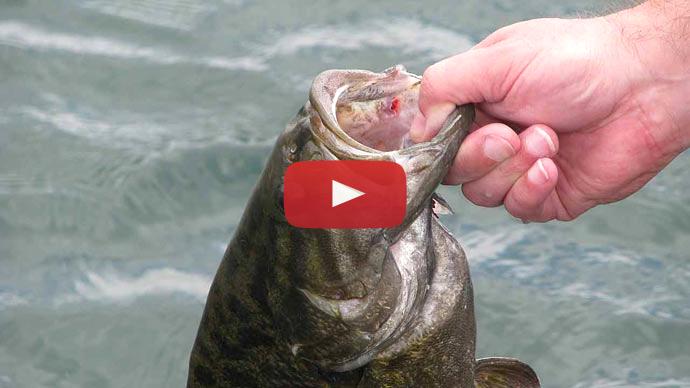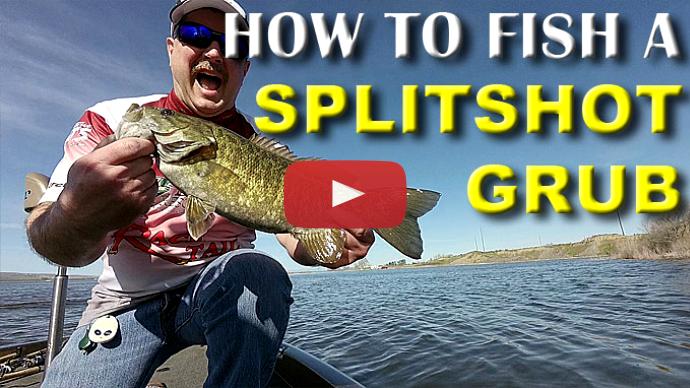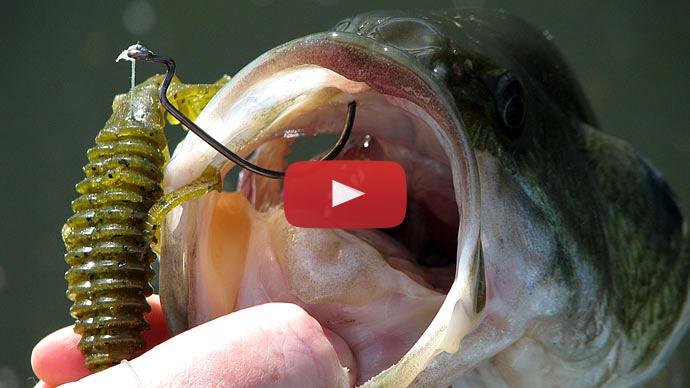Yeah right in this cover, that is why we throw Texas rigged grubs. Look at all this cover right here, and he's buried up in it. Look at this. Right in all that cover right there, throwing Texas rigged grubs. Right on this side of his face. Not bad. Boy he ate that thing, look at how deep it took it man. Let's talk about this.
I'm gonna show you how to rig it, how to use the rods, what rods and reels and equipment to use, and then I'm gonna show you different techniques on how to throw Texas rigged grubs.
Hey folks, Glenn May here with BassResource.com. And today I want to talk to you about fishing a Texas rig grub. Yeah, one of these babies right here. Now if you're not sure how to rig one these, I've got a video that tells you how to do that and it's linked underneath this video and you can go check that out later. But what I'm going to talk about today is the different eternal tackle that I'm using and the rods, that sort of thing. And then, I'm going to go out and show you how to fish it.
Now with this here, what I do the most with this bait is I usually swim it back, across weeds, across rocky areas, I'm fishing it that way. Every once in a while I'll flip it into reeds or weeds, that kind of stuff, but not real heavy cover. And that's because with this tail it likes to wrap around things and then when you pull it, it'll break off. So I'm not throwing it into heavy, heavy cover. So for that reason, I'm using a lighter sinker here. This is just an eighth ounce tungsten weight and 30 pound braid, that's it. Now if you don't plan on flipping or pitching it into cover you can go with a copolymer line, maybe a 15 pound copolymer line. You don't need to go that heavy with this because we're not digging fish out of deep heavy cover.
But I like to use the braid just in case there's something nearby I feel like, hey I want to flip into that. That's why I go with braid, a little bit more versatility. So that's that and because I'm using braid and I might be flipping, I use a little bit stouter rod, I'm using a medium heavy action rod. You can see it's pretty stout. Bait casting is my preferred outfit. And that's all we do, that's it. Easy setup, let's go fish it.
So the Texas rig grub, I like to fish it in a couple different ways. One of them I occasionally will flip and pitch it into weeds or reeds, into some woody cover. But I don't do that very often because the tail likes to get wrapped up in that stuff and then it'll get pulled off and I'll break it. So I don't do it as much. Every once in a while I will but that's only when the fish are really chasing bait fish. Usually I'll throw something else in there but if I happen to have one tied on, I want to throw it quickly into a bush pile, or something like that, I've got one tied on, I'll throw it in there.
Really what I like to use it for is fishing a situation like this. I've got submerged weeds out here, about 4 or 5 feet underneath the water, it's about 15 feet of water. That's when this shines. Or fishing rocky cover, rocky banks, that sort of thing. Anywhere you would throw a crank bait that's a good place to throw the Texas rig grub. And the reason being is this simple, all you got to do is cast it out there, let it fall to about the level of those weeds, and then just reel it back. You're just cranking it back just like you would a crank bait. And that's why this is really good in an area.
So for example, if you've been fishing an area with crank baits and the bite dies off and the fish stop biting it, pick up a Texas rig grub and keep casting. Many times you'll start catching them again, you know, you'll pick up right where you left off. So that's a perfect scenario for this bait. Except the little difference is, because it's a Texas rig plastic, you can get a little further down in those weeds than you could with your crank baits. So if the fish just aren't quite on the surface of those weeds, you want to dig down a little bit deeper. That's another good scenario to fish this bait.
Now the hook set, because the hook is buried inside the bait, you do want to have a good stout hook set on this one. So that's the difference, if you're fishing a crank bait most of the time the fish just hook themselves. So if you switch over to this, get ready to change your hook set as well. And that's really all there is to it.
What I might do is I might swim it. So another technique when I throw it out here is I'll do a little up and down. So I'll let it fall, let it get down in those weeds a little bit, reel up the slack, and lift up that rod tip and let it fall. Just pick up the slack as it falls. But I'll drop the rod tip about the same rate that it falls. Lift it back up again and let it drop back down. Here I'm maintaining contact with it as it falls straight down, but I'm still letting it fall straight down. This is what's referred to as letting something fall in a semi slack line. And here you're just swimming it back and forth like that. A lot of times as it drops, that's when the fish want to bite it.
It's a very versatile bait, lots of different colors, lots of different sizes. But the retrieves are basically the same. That's it, that's really it. Occasionally I've fished it by just dragging it on the bottom but I've really haven't had as much luck with that. You typically, if the fish are feeding off the bottom I'll use a different bait. Lot of times what I'll do is, for example in the summer and winter time when the fish are out a little bit deeper in the main lake, I'll fish main lake points, rock humps, rock piles, ledges, creek channels, those types of things. That's what I'll target in the summer and the winter. And then in the fall and in the spring, when most of the fish are up shallow and feeding, I'll go to the back of coves, the back of creek channels, protected bays, secondary points, and flats. That's what I'll target with this bait, fishing it just the way I just showed you. If you do those things, you're going to catch a lot of fish.
For more tips and tricks like this, visit BassResource.com.



